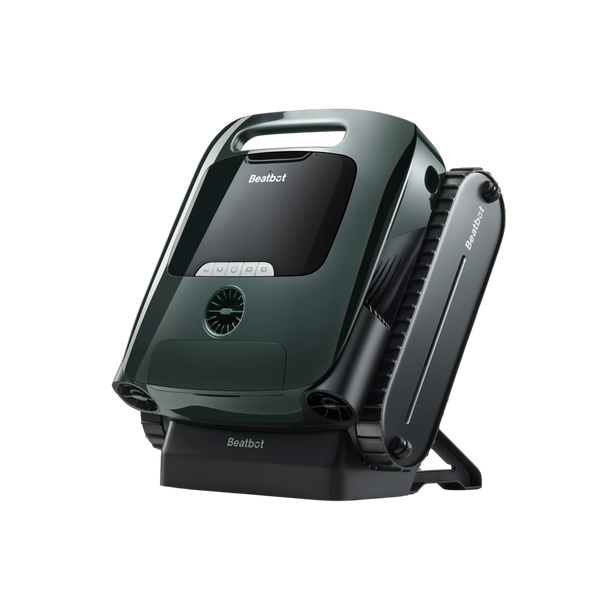Winterize Your Pool: The Complete Seasonal Preparation Guide
2024-04-03
As autumn leaves give way to the chill of approaching winter, pool owners must turn their attention to the task of winterizing. Properly preparing your pool for winter safeguards it against damage, keeps it clean, and ensures a smoother reopening come spring. This guide will show you the steps for effectively winterizing your pool, incorporating expert advice and maintenance tips to protect your pool throughout the cold season.
Table of content
Winterizing your pool might seem daunting, but with this guide, you'll learn to protect your pool through the winter months. By following these steps, you ensure your pool remains in good condition, saving you time, effort, and money in the long run. Remember, a little preparation goes a long way in extending the life of your pool and making the transition between seasons seamless and stress-free.
The Significance of Winterizing Your Pool
Winterization is crucial for any pool owner wanting to protect their investment from the harsh realities of winter weather. By winterizing your pool, you're not only preventing potential freeze damage to the pool's structure and plumbing but also combating algae growth and maintaining water quality. This forward-thinking strategy conserves time, effort, and finances by reducing the necessity for thorough cleaning and repairs upon reopening your pool.
Detailed Steps for Pool Winterization
Begin With Balance: Adjust Your Water Chemistry
Start your winterization process by balancing the pool's water chemistry about a week before closing. Adjusting the water pH, alkalinity, and calcium hardness levels is essential to prevent corrosion and scale buildup. Ideal levels should ensure that your water remains clear and protected throughout the winter, ready for a fresh start in the spring.
Deep Clean: The Foundation of a Good Winterization
A thorough cleaning is the first step in the winterization process. Skim, vacuum, and brush your pool to remove debris, leaves, and dirt. This prevents algae growth and reduces the workload when reopening your pool. Please pay special attention to removing algae, as cooler temperatures won't eliminate it but only slow its growth.
Water Level Wisdom: Lowering for Protection
Lower the water level to just below the skimmer or as your pool manufacturer recommends. This step is crucial to avoid water entering the skimmer during freezing temperatures, which can lead to damage.
Plumbing Preservation: Avoid the Freeze
Water left in your plumbing can freeze, expand, and cause significant damage. To avoid this, blow out the lines using a shop vac or air compressor, then plug the lines. This step is crucial for preventing burst pipes and avoiding costly repairs.
Covering Your Pool: A Shield Against the Elements
Selecting the right pool cover is vital for winter protection. Opt for a durable cover that fits snugly over your pool and can withstand heavy rain, snow, and wind. A proper pool cover keeps out debris and minimizes the risk of algae growth under the cover.
Enhancing Winter Protection: Beyond the Basics
Winter Chemical Kit: Your Pool's Winter Coat
A winterizing chemical kit is necessary for your pool to keep the water clean and algae-free throughout the off-season. These kits will balance your pool's chemistry over the winter months.
Securing the Cover: The Final Seal
A securely fastened pool cover is your last defense against the elements. Ensure it is tightly secured with water bags, clips, or cables, depending on your pool type. Frequently check the cover for any indications of wear or damage, making necessary adjustments to ensure it remains securely in place.
Equipment Care: Safeguarding Your Pool's Heart
Properly winterizing your pool's equipment is just as important as preparing it. Drain and store all detachable parts indoors, and follow manufacturer instructions for winterizing pumps, heaters, and filters. Protecting your equipment from freezing temperatures prevents damage and extends its lifespan.

FAQs About Pool Winterization
When Should I Start the Winterization Process?
Timing is key. Begin your winterization process when the daytime temperatures consistently fall below 65 degrees Fahrenheit. This temperature is typically too cold for algae to grow, making it an ideal time to close your pool.
Can I Winterize My Pool Myself?
Absolutely! Most pool owners can winterize their pools with the right tools and guidance. However, feel free to consult with a professional for specific concerns or clarification on any steps.
How Often Should I Check on My Pool Over the Winter?
It's wise to check on your pool and its cover every few weeks during the off-season. Look for accumulations of water or snow on the cover, as these can strain and potentially damage it. Inspect the water level and the condition of the chemicals if possible. Keeping an eye on these factors can prevent surprises when it's time to reopen.
Relative Blogs
About the author



















